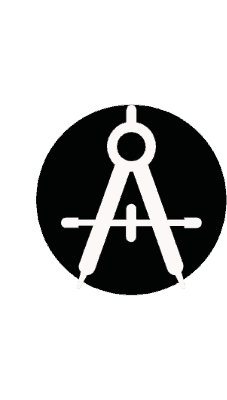In this article, I will review the key elements for creating a design questionnaire for your landscape business.
One of the biggest mistakes most new landscape design companies make when starting is failing to develop a simple and effective questionnaire for new clients. When developing an initial client base for your business, it is useful to have a standardized form to provide to homeowners. The questionnaire does not only provide valuable information for the designer, but it also helps focus the client on their own needs, wants, and wishes for their property. By completing the questionnaire first, it can make on-site consultations much more productive and valuable to both parties.
What is the Purpose of a Questionnaire?
A design questionnaire is a form created by professional landscape designers to give to their current or future clients for clarification on the services, personal needs, and desired intent of the project. The questionnaire can be a useful tool for residential and commercial designers, as it can be used in conjunction with a traditional on-site consultation or as a standalone document to assist the designer in creating a plan for the property.
Traditionally, the questionnaire should not be the sole source of information when completing an effective and inclusive landscape design for a client. It should be used as a supplement to provide key details about the project and allow the client to express themselves and their needs.
What is the Proper Length?
When you start developing your questionnaire, it is easy to make the mistake of asking for too much information from your client. On the other hand, you also want to ensure that you are not missing anything important that may cause issues – whether design or installation – in the future. So then, what is the proper length?
For most residential clients, you should try to create a questionnaire that requires no more than 10-15 minutes to complete. Although this might seem too short to some, if you are asking the right questions and formatting the questionnaire appropriately, fifteen minutes is more than enough time to obtain a wealth of information about the intended project.
Remember, the questionnaire is meant to supplement a longer discussion between the designer and the property owner. It is NOT meant to replace it. Therefore, keeping the questionnaire capped at 15 minutes will provide enough valuable information without wasting the client’s time. You are serving them, not vice-versa.
Use Multiple Formats & Technologies
For some, completing a standard 15-minute survey can feel like an eternity. For others, the minutes might fly-by quite quickly. IT all depends on the format of the questionnaire. So what is the best practice for asking questions to your potential client?
The first advice I would give to a designer is to be wary of the “open-ended” question. Providing a basic question such as “What are the needs of your property?” may seem harmless, but it can open the door to a limitless and unorganized essay from the client that will provide no additional insight and waste your valuable time deciphering it.
Instead, you can utilize check-boxes to accomplish the same goal. Simply ask the same question “What are the needs of your property?” but also state “check all that apply” and offer a series of checkboxes with different services that your company offers – deck, patio, kitchen garden, etc. By formatting the questionnaire in this way, the client will need to decide what they are hiring you for specifically.
Any additional information that the client needs to address with you can be discussed during an on-site visit. Also, the formatting can help your company allocate work within the appropriate department as it grows. If certain clients check the “maintenance” box, they will be transferred to your maintenance division, while those checking off “design and installation” services can be sent to your design department.
Finally, make sure that you are offering your questionnaire on a variety of platforms so that a potential client can easily access the questionnaire. This can be done quite simply by putting a fillable pdf file on your website under the “inquiry” or “contact” section. A customer can open up the pdf and either fill it out online and email it to your company, or print it and mail it in.
When I first started, I created a nice professional package using these affordable file folders, with my business card, services information, and the design questionnaire. I would then later come back to the client to review the information and sign a contract. IT works very well and provides a nice authoritative and professional face for your business.
Additionally, if you are using the recommended WordPress platform to develop your website, you can even create a widget on the website itself that can be completed and submitted right from their computer.
Just remember that a form that is difficult to find, open, and complete is much less likely to be utilized by your client, so take the time and think of the user’s experience.
A Picture Is Worth A Thousand Words
When you hear the words “classical garden” what do you visualize? Well, it is most likely something much different depending on who is answering the question. This is a problem when asking design-oriented questions in an initial client consultation form. Most individuals have different terms for how they perceive things and your idea of a “classical garden” might be much different than someone else’s.
Fortunately, no rule says you can’t use pictures or photographs to help clarify your questions or the client’s choices. By offering a series of pictures, along with a simple tagline such as “a zen garden” or “a kitchen garden”, the client can make the connection between the phrase and the intended result.
A company can use this technique to gain initial feedback on the personal style or interests of their client. By having one-page of the questionnaire focused on the “style” of the garden they wish to develop and linking it to a series of pictures, the form can provide much greater clarity between the company and the client. This will make future conversations more fruitful.
Use Common Language, Not “Industry Speak”
It is easy to forget that your customers are not necessarily interested in the green-industry trades, nor up-to-date on the key terms landscape designers might use daily. Therefore, it’s important to keep your questions formatted for the average consumer.
I had a problem with this issue when I first started doing design work. I was young, energetic, and full of ideas. I remember vividly sitting down with a client and reviewing all of the fabulous perennials I was going to place in their yard to provide color, seasonality, and fragrance – the whole works. After spending about 20 minutes detailing the design intent, the client looks at me and says “That’s great, but what’s a ‘perennial’?”
You see, I had formatted my presentation based on what I believed designers or horticulturalists might find valuable, but not necessarily what my client found important. This taught me an important lesson both for future design presentations and when teaching design to new students.
An easy way to check if your questionnaire is understandable to the average consumer is to test it out on family or friends that are not in the field and get feedback from them.
Don’t just stop with terminology – ask them about the overall user experience and whether or not they believed the questions were relevant to what a client may need. Sometimes as designers we have blinders on – enlisting the help of a non-industry test group can be very beneficial.
Be Sure To Review “Next Steps”
Finally, make sure to wrap up your questionnaire by providing information at the bottom of the form that states how you will be using the information, when you will reach out to the client after receiving the form, and what the next steps in the design process will be. Communication with your client is essential to a successful project. By providing this written information at the bottom of the form will provide them great comfort that their work was not pointless.
A good book that helped me discuss the next steps with clients and close a sale was “Getting To Yes” by Fisher and Ury. It provided good guidance in focusing a client’s attention on their design problems and gave me more confidence in asking for the job.
As you can see, creating a client questionnaire is not a simple task. To make the questionnaire useful and effective for both you and the client, you need to consider many items. Don’t be afraid to revisit the questionnaire on an annual basis and make adjustments based on feedback or personal experience. The questionnaire can be a living document that grows with your business – it is worth taking the time to make it perfect.
If you liked the content of this article and want to learn more about the profession and practice of Landscape Architecture or Design, please be sure to check out our Design Resources and Landscape Business articles.
____________________________________
Important Legal Disclaimer: This site is owned and operated by Draftscapes. We are a participant in affiliate marketing programs designed to provide a means for sites to earn advertising fees by linking to participant vendors. Affiliations include Utrecht Art Supply and Amazon Associates. Draftscapes is compensated for referring traffic and business to these companies. Recommendations for products or services on this site are not influenced through the affiliation.


